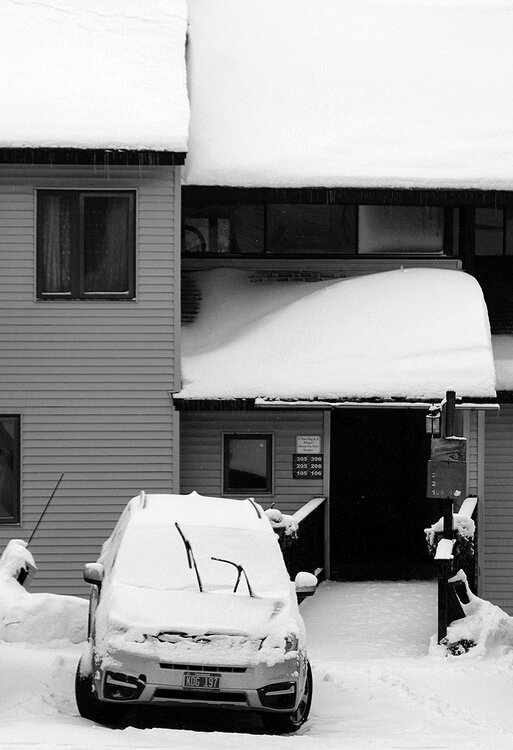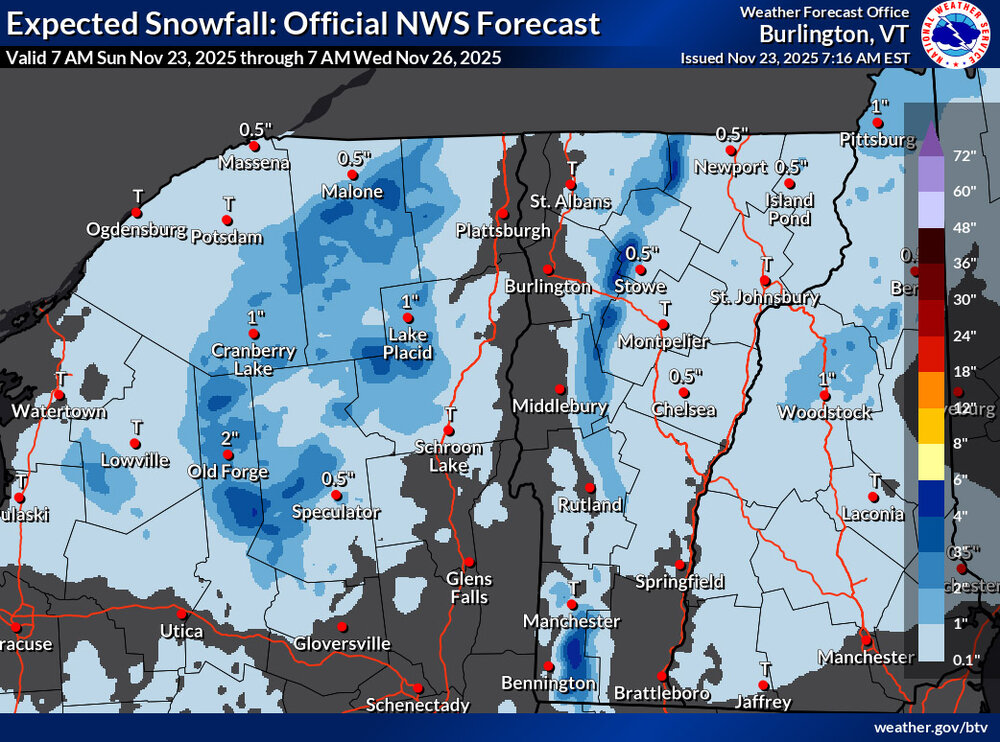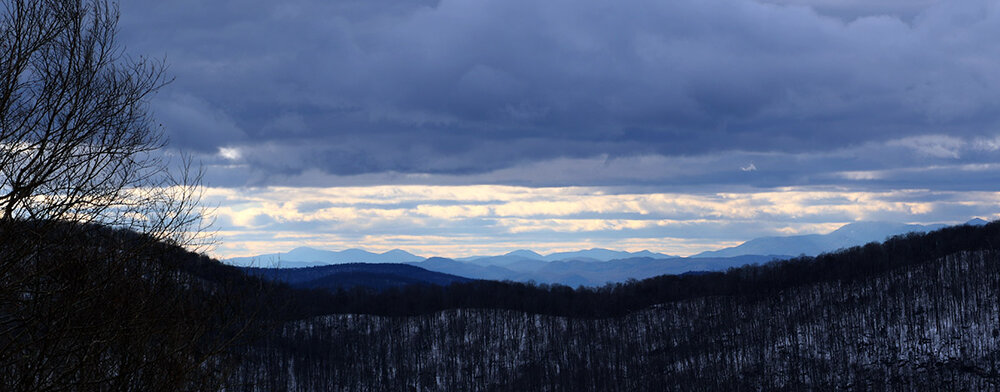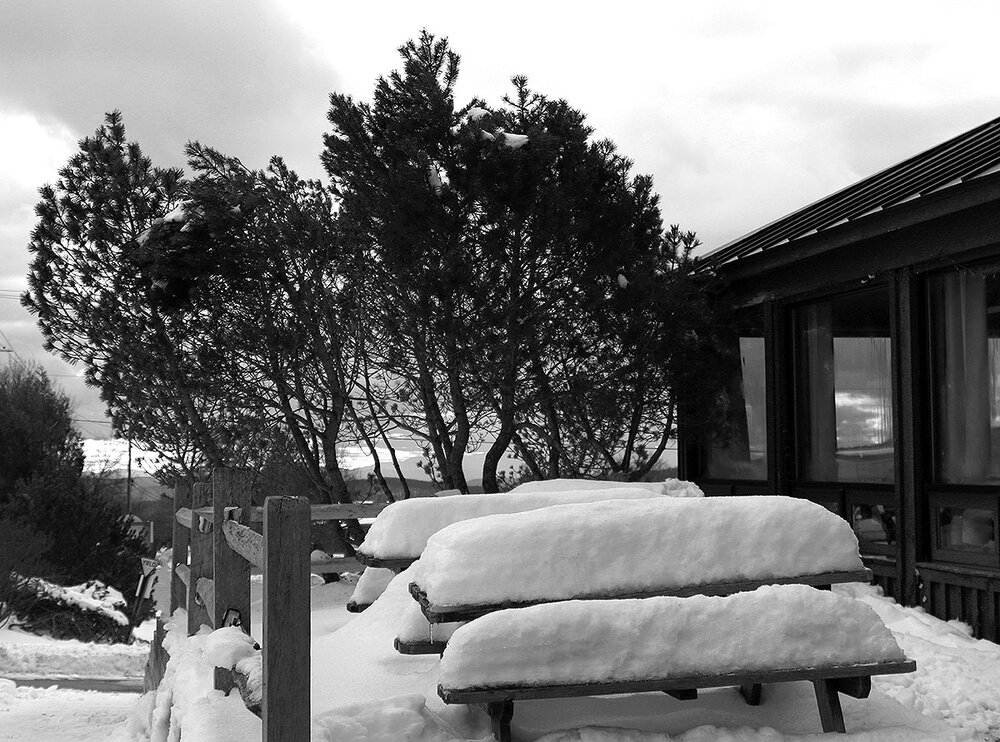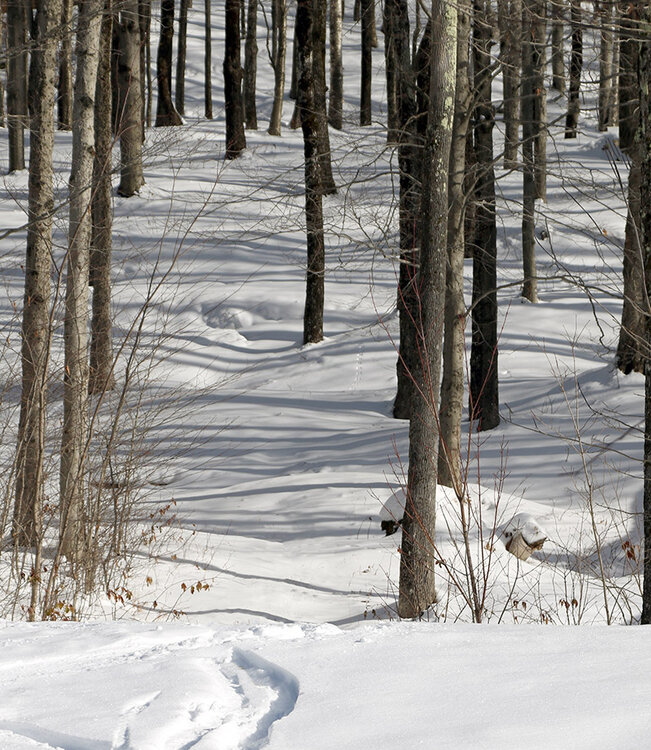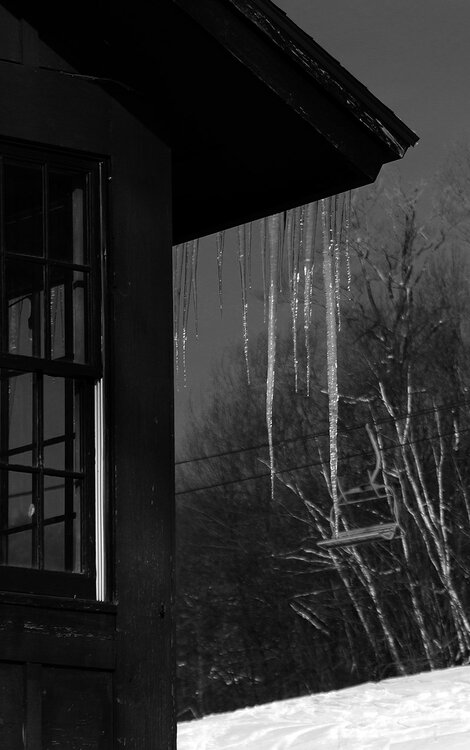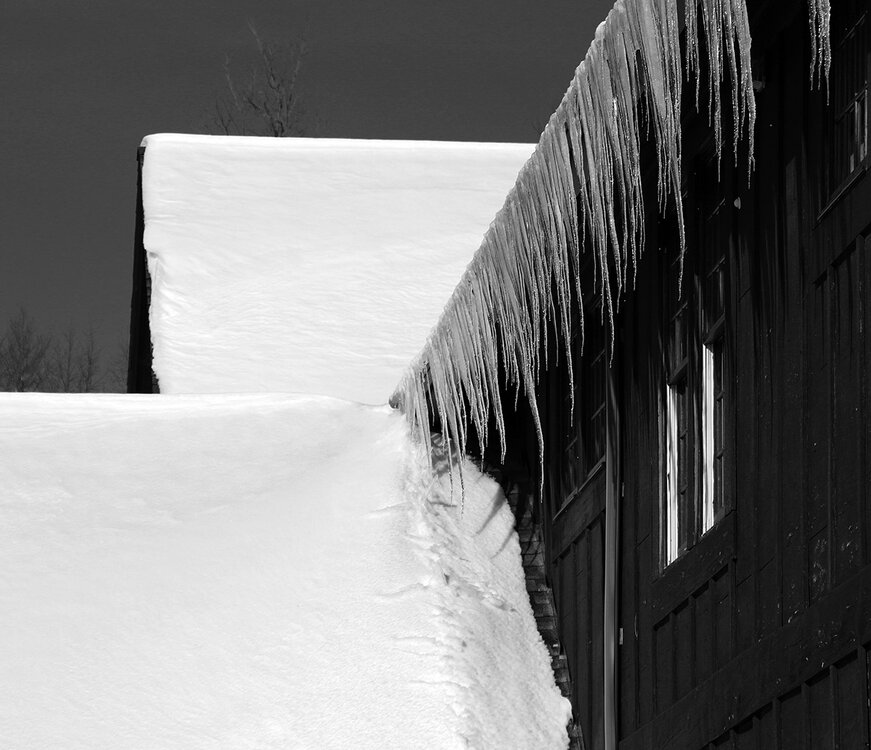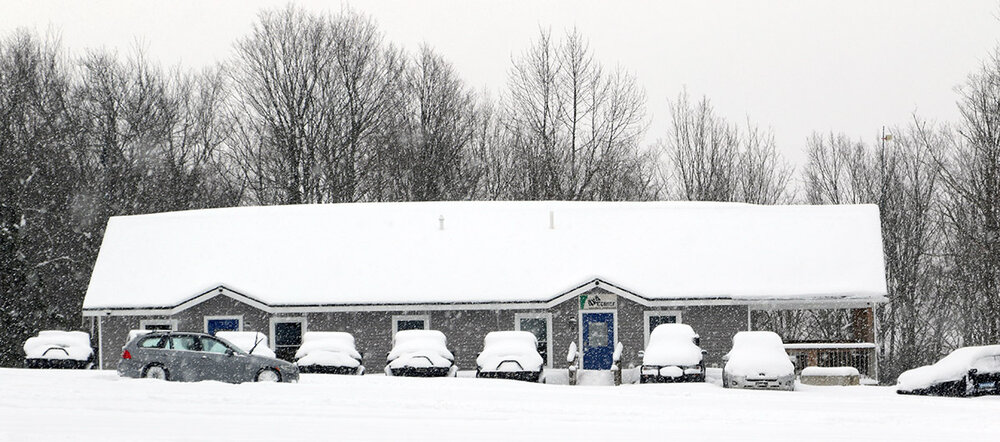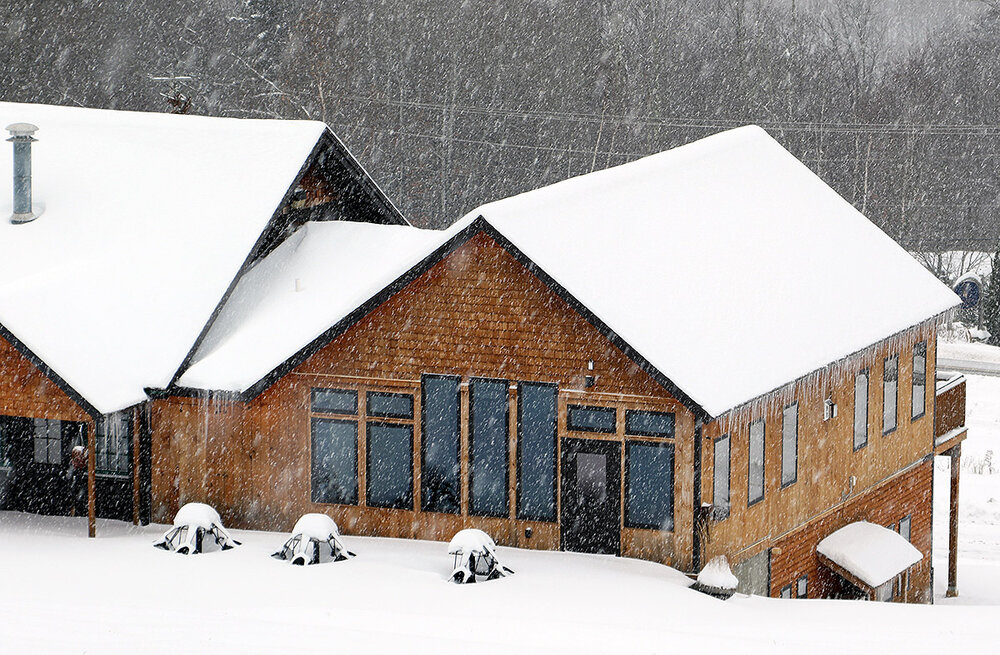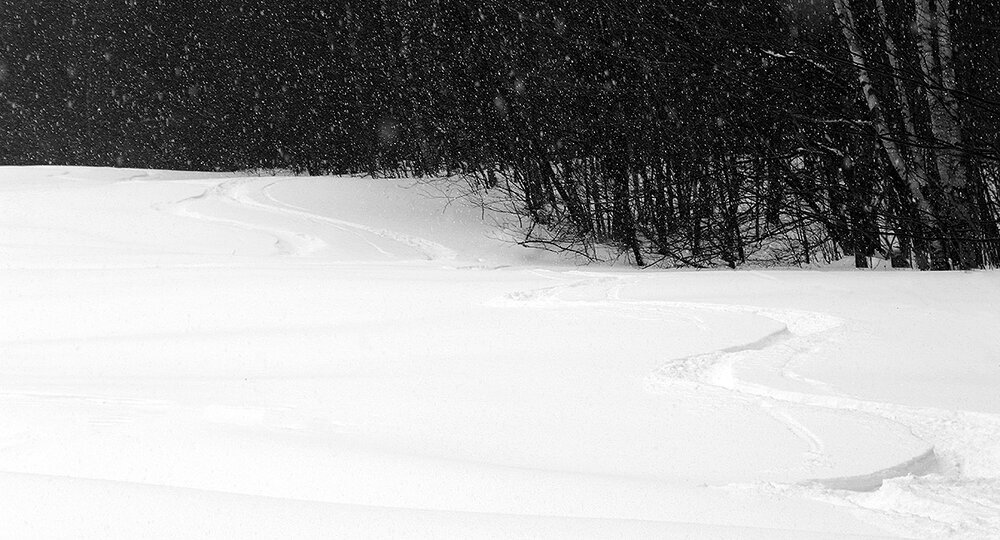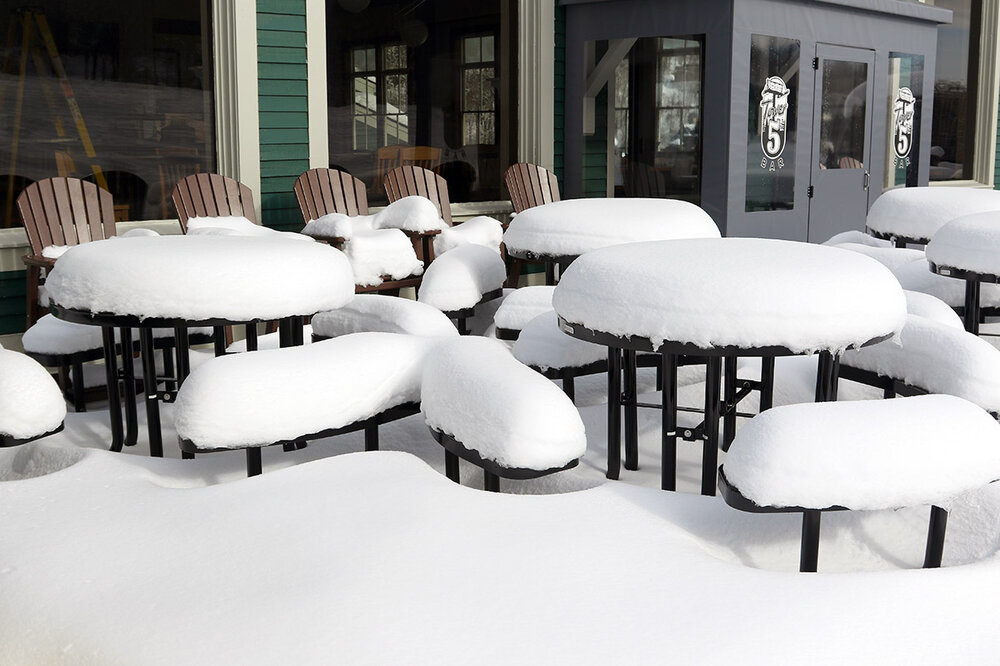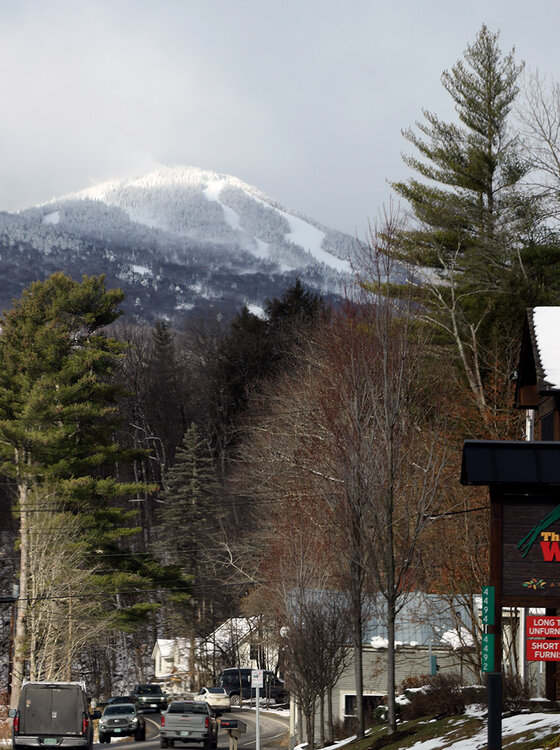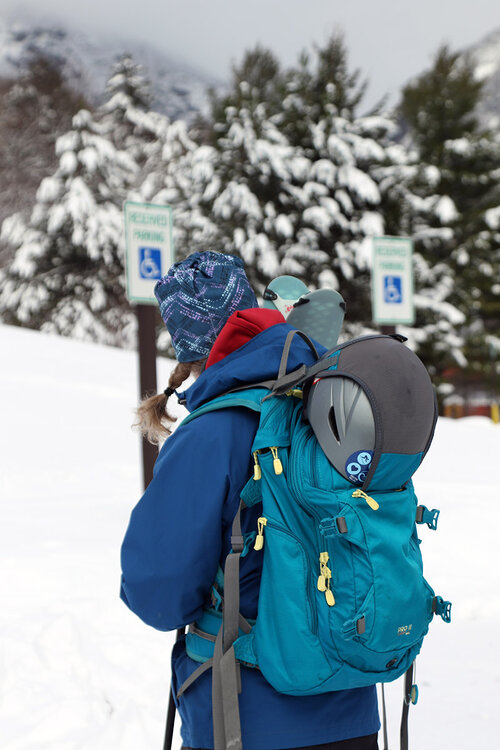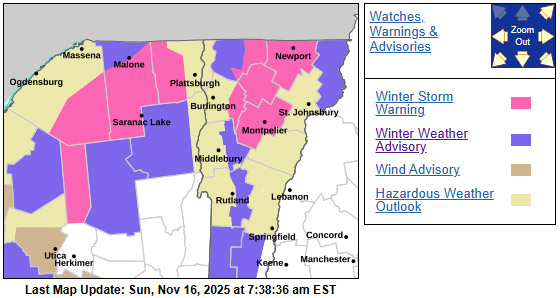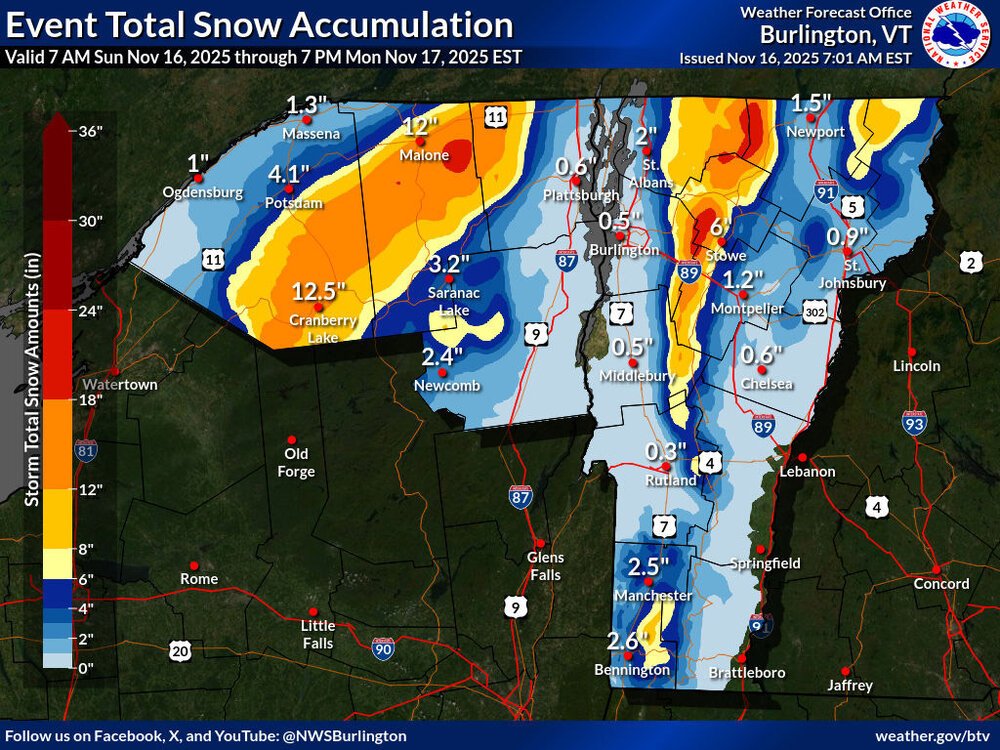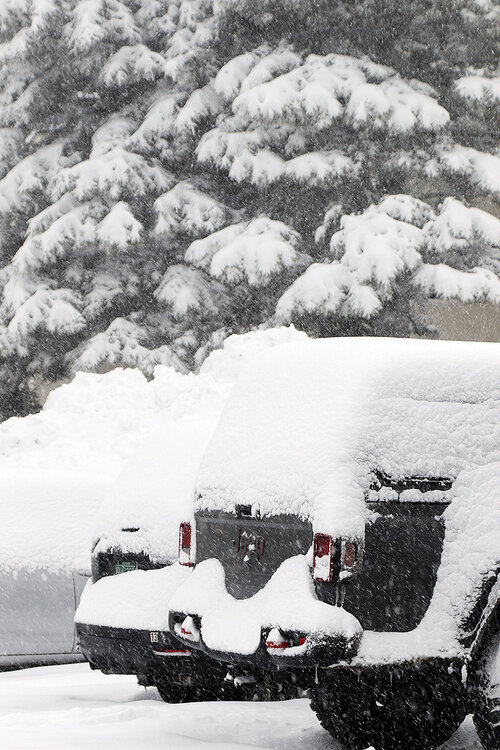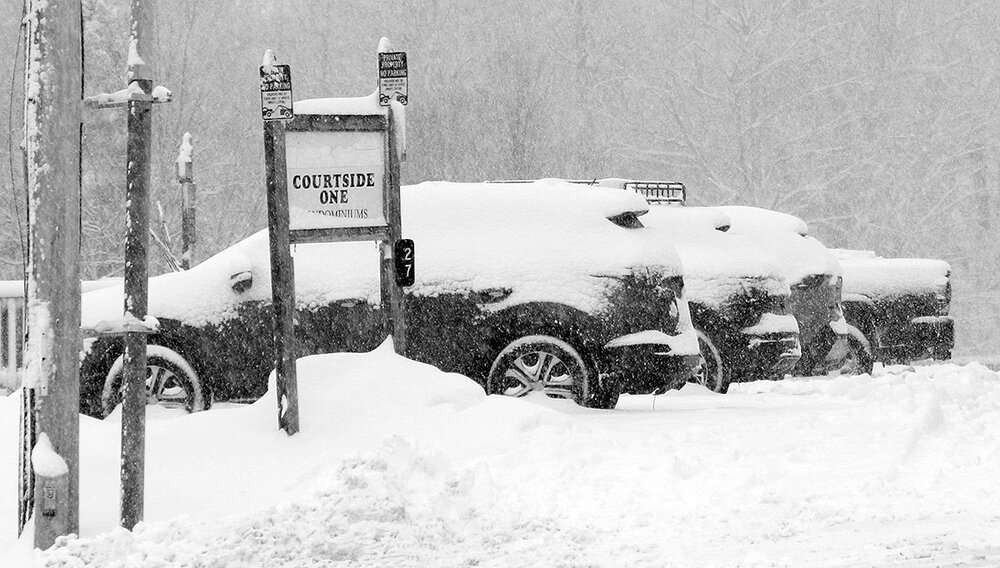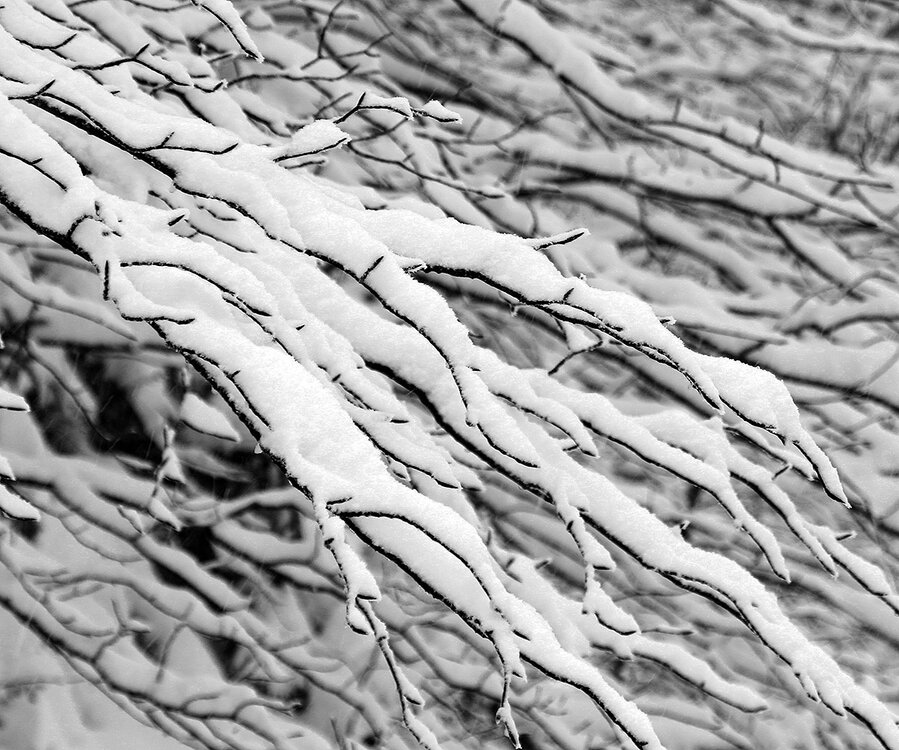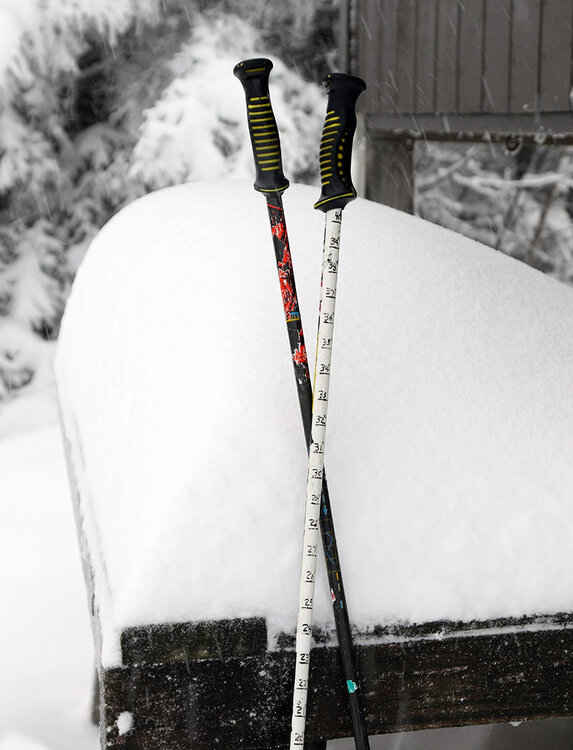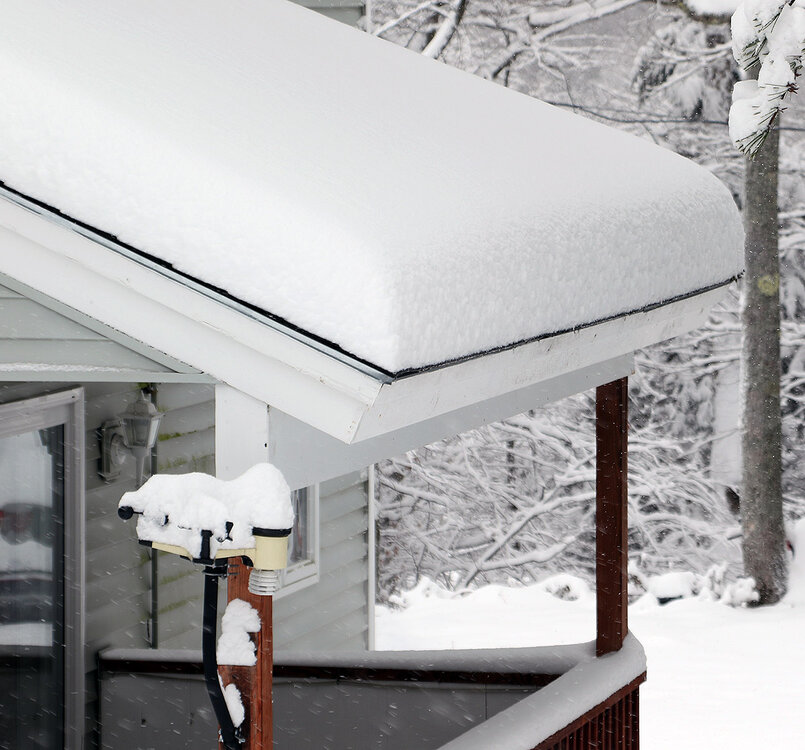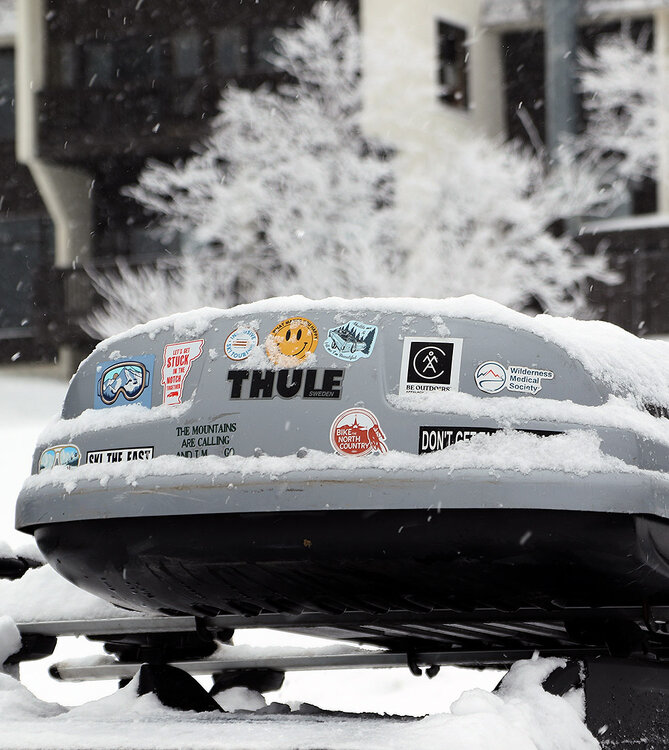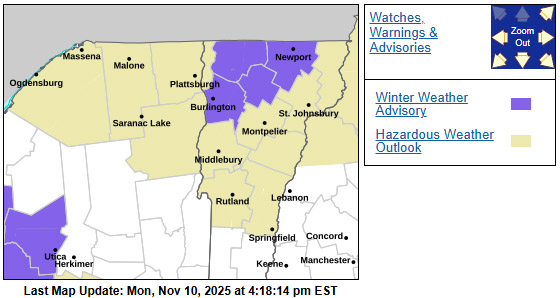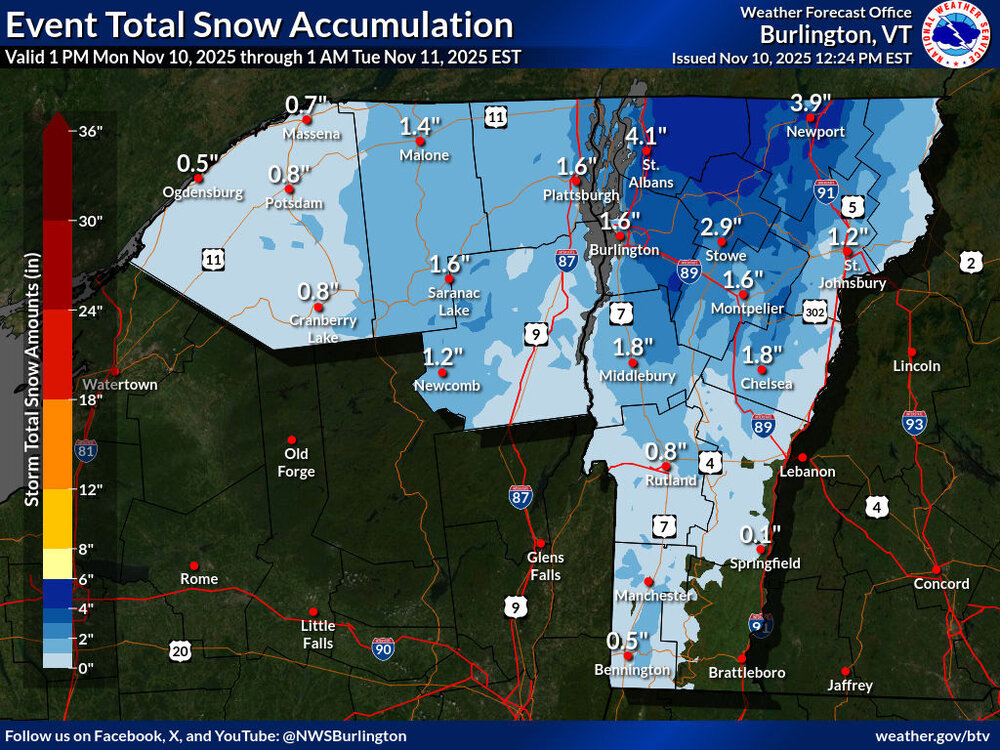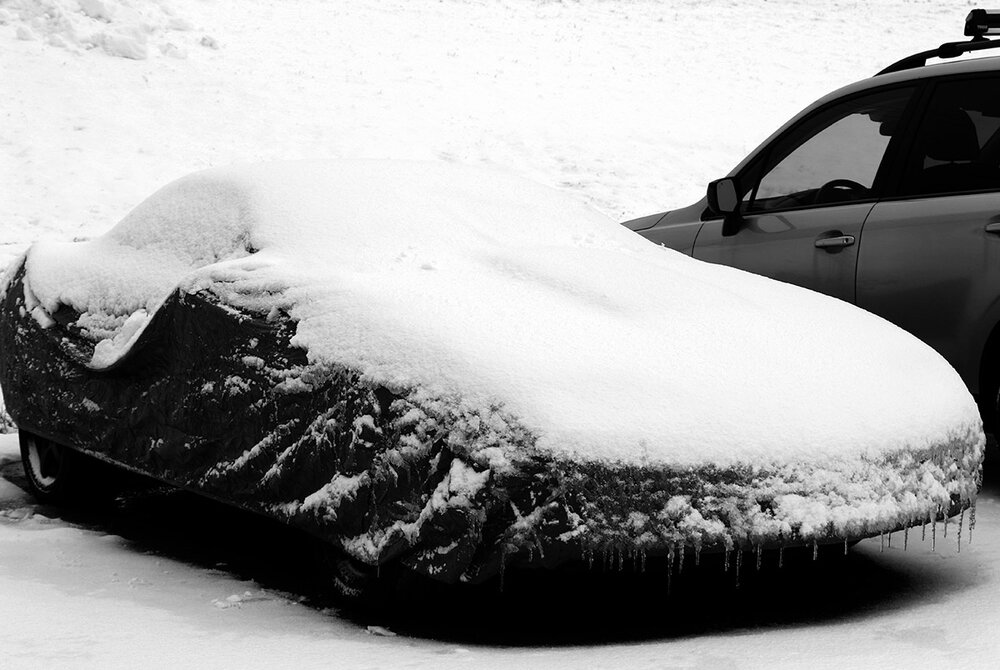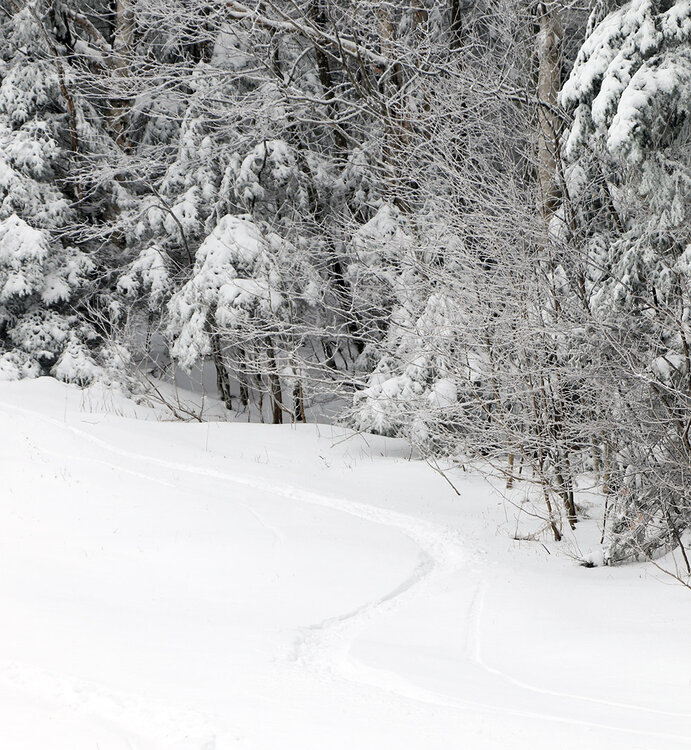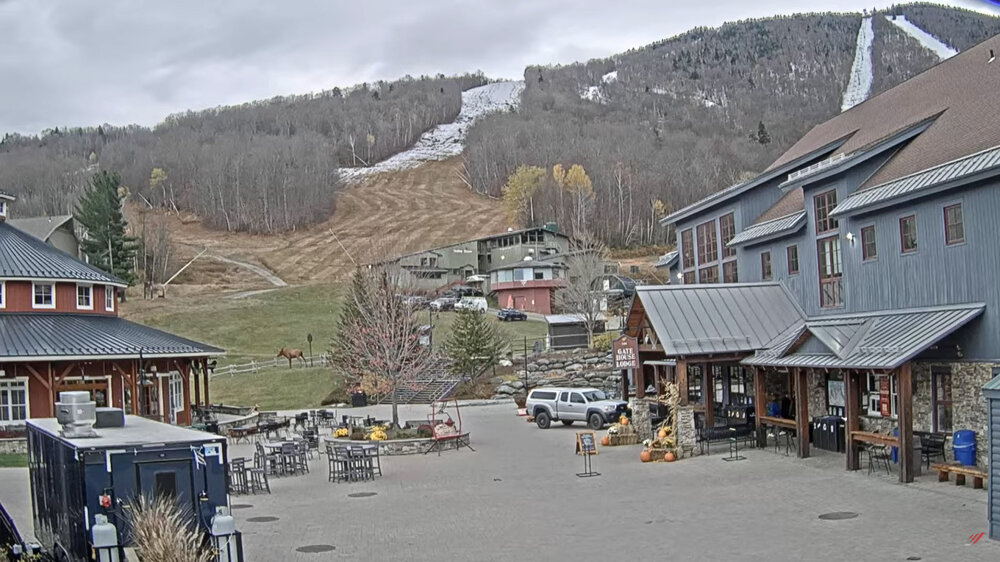-
Posts
6,340 -
Joined
-
Last visited
Content Type
Profiles
Blogs
Forums
American Weather
Media Demo
Store
Gallery
Everything posted by J.Spin
-
The clipper system that came through the area over the past couple of days was relatively weak, but in general agreement with the forecast, we still picked up close to 2 inches of new snow at our site down in the Winooski Valley. I was up in the Bolton Valley Village on Sunday, where it was snowing at a decent clip, and as of their snow report that evening, they indicated that they’d already picked up 3 inches of new snow. I’m not sure how much more they picked up overnight into yesterday, but at the pace the snow was falling, it seemed like it was worth taking a tour to check things out. Valley temperatures were marginal for parts of the event, and as I headed up the Bolton Valley Access Road yesterday morning, there weren’t any substantial signs of new snow until I’d reached roughly 1,000’ of elevation. After a couple of tours from Timberline’s lower base elevation over the past several days, it was clear that the better play with this system would be to start my tour up at the Village. The cloud ceiling as I ascended was around 1,800’, and above that point, everything was socked in with dense clouds and lightly falling snow. At ~2,000’ in the Bolton Valley Village, I found 1-2” of new snow accumulation. From my visit to the mountain on Saturday, I knew that temperatures above freezing had affected the snowpack, at least up to the 2,500’ elevation. So, the new snow from our small system certainly wasn’t going to resurface that snowpack, but I was curious about what was going on in the higher elevations. The accumulations of new snow did increase the higher I went, but more importantly, at some point between 2,500’ and 3,000’ you reach a level where it’s clear that the temperatures haven’t gone above freezing in quite some time. The snow quality there is excellent aside from areas affected by the wind or some sort of skier of resort vehicular traffic. I did my best to estimate the accumulations from this latest system at various elevations, but once you get up to the point where there’s no consolidated melt layer to mark the surface of the old snowpack, it becomes difficult. In any event, here are the estimates for accumulations I found from this event at various elevations in the Bolton Valley area: 340’: 0” 500’: 0” 1,000’: 0-1” 1,500’: 1” 2,000’: 1-2” 2,500’: 3-4” 3,000’: 5-6” All the snow from these November storms has really been accumulating on the trees, and in places where it hasn’t gone above freezing to melt some of it off, it’s a lot of weight on the evergreens. In fact, I saw several evergreen trees that had fallen onto the trail along the Wilderness Uphill Route. There’s also a layer of ice on the trees that accumulated from whenever we had some mixed precipitation earlier in the month, and that is definitely adding to the weight the trees are bearing. While I was up at the Wilderness Summit, I watched a small section of trees on Ricker Mountain just collapse from the weight of the accumulated snow and tear away a large chunk of soil as they tumbled down the slope. In any case, many of the evergreens in the higher elevations are absolutely caked with midwinter levels of snow.
-
That system is on our doorstep now, so we should have a decent sense for potential accumulations. The latest BTV NWS forecast discussion that mentioned accumulations was from earlier this morning: Area Forecast Discussion National Weather Service Burlington VT 1251 AM EST Sun Nov 23, 2025 .NEAR TERM /THROUGH MONDAY/... Total accumulations will be relatively light, mainly 2 inches or less, with the highest accumulations above 1500 ft. The summits could pick up 3 to 5 inches during this time frame. On their most recent maps for expected snowfall, it looks like projections are for 4-6” in the higher elevations, and 1-2” in the mountain valleys, so that seems to jive with the forecast: As I mentioned in my report from yesterday, the mountains could use a refresher to bump the powder conditions up a couple of notches, and it’s always nice to cover up some of the open areas in the valleys as well. This event certainly won’t be a full resurfacing event for the slopes, but the models generally suggest something on the 0.1”-0.3” of liquid equivalent for the mountains (with the 3K NAM being up there >0.5”, which is typically exaggerated as PF has been noting). It looks like snow chances will start to pick up a bit more as we go forward with the GFS showing 6-7 systems through the course of the latest deterministic run.: Sun-Mon: Clipper Wed-Thu: System heading into northern Ontario/Quebec Thu-Sun: Cold Front/LES Mon-Tue: Snow/Mix/Rain Tue-Fri: Rain to snow After that there are a couple more systems into the first week of December, but that’s way out there in the modeling of course. In any event, many of the systems have some rain potential, but lots of frontside/backside snow potential as well.
-
I was last out on the mountain for turns on Thursday, and the powder from our early week storm was holding up well. There had certainly been some consolidation of the snowpack, with sunny areas seeing the effects more than shaded areas, but the general consistency of the snow was dry, and there was no melt layer or melt crust. A couple days have passed now, and we haven’t had much in terms of new snowfall. High temperatures in the mountain valleys have remained in the 30s F, but the lower elevations have definitely been above freezing, and the snow has seen some thaw-freeze cycles. I didn’t know how high the freezing line had gone and how the snow quality might have been affected in the mountains, but I figured I’d head up for a ski tour today and check it out. I decided to tour at Timberline as I’d done on Thursday, which would give me a good point of comparison with respect to changes in the snow. From today’s tour I can say that the freezing line has definitely been above 1,500’ on the western slopes, and even above 2,000’. The snow hasn’t consolidated much more from where it was on Thursday, but the above-freezing temperatures have definitely degraded the quality of the snow. Even shaded areas have a melt layer in the top few inches of the snowpack, so you’re not dealing with fluffy, right-side-up powder skiing. Thankfully the humidity has been relatively low, so the melt layer has a spongey consistency instead of being a refrozen aggregate. I’d still recommend alpine fat skis with some decent rocker or a snowboard as the best riding tools. The powder is a bit upside down now with that melt layer on top and drier snow below, but shaded snow is still reasonably surfy if you’re on a nice big platform that can ride up in the higher areas of the snowpack. I was on my 115 mm Telemark boards, but I made only a few Telemark turns – I stuck with alpine turns for the most part because the more consolidated platform and tighter stance was a much better fit for those snow conditions. As long as you have the appropriate tools on your feet and stick to untracked areas of snow, you can get some decently surfy turns. Tracked or packed areas of snow aren’t offering up great turns right now – the snow there has consolidated enough that it’s just bumpy terrain and you’ll get tossed around for a much rougher ride. At least in those lower elevations, we’ll need a decent storm to get back to fluffy powder conditions. Today was supposed to be fairly benign with respect to the weather, but in true Northern Greens form, as soon as I started gearing up at the Timberline Base, a snow squall moved in and pounded us with heavy snow/graupel and reduced visibility for several minutes. It was nothing that resulted in substantial accumulations, but it was a definite reminder from Mother Nature that she’s there. In their early morning forecast discussion, the BTV NWS mentioned two areas of weather interest for today passing to our north and south, leaving us in “no man`s land” with no active weather, but in later updates they noted that there was going to be plentiful cloud cover across much of the region in the afternoon as an upper-level shortwave passed through and supported cold air advection and snow showers. We even picked up accumulating snow down at our place in the valley, so there was definitely some wintry weather out there, even during this relative snowfall lull. Bolton’s planned opening day was the 28th, but in the spirit of all the November snow we’re received, they started the lift-served season today. Lift Operations Manager Scott Beasley and President/CEO Lindsay DesLauriers made a fun social media post on Thursday to break the news to the community. They’re only running the Mid Mountain Chair and the Mighty Mite at this point, but since I was up at the mountain anyway and had to hit the main base to take care of some passholder stuff, I figured I’d stop in for a few lift-served turns. Conditions were fine, with a mix of manmade and natural snow, but with manmade snow in the mix, there were certainly some firmer areas. You can tell it was a bit of an impromptu opening since they hadn’t full groomed the Bear Run route, but that left some fun contours on the terrain and made it even more interesting. The highest elevation I reached today was up to Mid Mountain at 2,500’, but even at that elevation, you could see that the snow had been affected by the temperatures, so you really have to go higher than that to find pristine winter snow at this point. The resort was bustling though, so it’s great to see them get off to a great start. I heard that they expect to open the Vista Quad Chair for next weekend, which is their original planned opening date.
-
Around here in the Champlain valley, Burlington, Waterbury, Stowe, etc. area, some houses have gutters, and some don't. Indeed, backedge is correct on the insulation - as long as you have a newer build house that was done with modern insulation standards, it's not an issue. Our house was built in '06 with gutters and we've had no issues for close to 20 years. And, it's not as if this area doesn't get a ton of snow. The snow just sits as a stack on our roof all winter, and gradually disappears, so there are never any icicles. The contractor who built our house commented on the level of insulation he put in the roof - I'm sure at a minimum it's to the R-60 local code, but he may have gone with more, since he commented on it. We have a truss roof, so it's not living space, so he could sort of go as thick as he wanted with the insulation. When he showed me the insulation up there in the attic space, it had to be at least a couple feet thick. I've mentioned it here in the form before, but as a kid, I always loved seeing the icicles on houses when we'd be driving around, but my dad would just grumble and say that means the house doesn't have enough insulation (he's a contractor of course). But that's the real deal - if you're getting icicles anywhere off the roof, it means there's not enough insulation there according to modern standards (at least around here in Northern Vermont, but I assume most cold climate areas would have updated their codes by this point as well).
-
By midweek, our protracted period of snowfall was winding down here in the Northern Greens, and we finally began to get some views of the mountains. When the clouds broke away you could see that the mountains were absolutely plastered with snow – the snowpack depth at the Mt. Mansfield Stake topping out near 40 inches will attest to that. Also notable in the views was the very low snow line – it reached way down below 1,000’ into the valleys. I hadn’t been out to the hill since Monday when the storm was still going strong, but I had enough time yesterday to go on a ski tour for my workout. I was unsure if the lower elevations of Timberline were still going to be offering good powder turns, but when I parked and checked out the snow consistency, it seemed quite good, so I decided to tour from there. The snow had definitely settled since Monday; depths at 1,500’ that were 15-20” on that outing were roughly 12” yesterday. There hasn’t been any real melting of the snow, so that really just represented settling of the snowpack, and all the liquid equivalent was still there to support skiing. Areas in direct sun showed greater effects of consolidation, but humidity levels have been low, so even the most affected areas still weren’t getting mushy. The depth of the snowpack definitely increased with elevation, and up around 2,000 – 2,500’ the snow depths were in the 1 to 2 foot range. I didn’t get any higher than that, but above 3,000’ the depths should be fairly similar to the depths at the Mt. Mansfield Stake. By yesterday there had naturally been a lot of additional skier traffic compared to Monday, but there were still plenty of untracked lines available. The very best powder was in areas protected from the sun, but that’s a lot of terrain at this time of year when the sun angle is so low. The snow may have consolidated a bit more today with the current system affecting the area, but as of yesterday, fat skis were still definitely the way to go. There were some areas of deep, unconsolidated snow that could really throw you for a loop. To that point, I hit one especially deep pocket that was 2 to 3 feet of bottomless fluff, and even on my 115 mm boards, everything just dropped away from below me and I wound up going head over heels into deep snow. It was a chore to extricate myself from that. In general though, the skiing just offered more sublime powder turns that would rank right up there with the best midwinter days.
-
That shot is a great representation of what’s been going on out there. I was busy yesterday as well, but I was able to swing by Bolton for a quick tour to check out the snow from the back side of the system. I was going to head up to the main base, which has been the way to go so far this season with its overall deeper snowpack, but I passed by Timberline and could see that the snow looked great even down to 1,500’, so I figured I’d save some time and tour there. Right at base lodge level I was getting snow depth readings in the 15-20” range, and part of that is consolidated base, so I could tell that all the terrain would be good to go. I have no idea what the snow depths are up above 3,000’, but with the snow depth at the Mt. Mansfield Stake sitting around 40”, it’s probably getting close to that mark in Bolton’s higher elevations as well. Anyway, Saturday offered up some great skiing, but yesterday’s skiing was next level because of the new powder that fell. Up to this point in the season, I’d say my outing back on the 6th had offered the best quality turns, but it certainly takes a back seat to yesterday. My snow analyses from the back side of the system gave an average of 6.0% H2O, and it was set up perfectly with a right-side-up gradient atop the denser snow below. If I rated Saturday’s skiing as a 6 out of 10, then yesterday was up around 9 out of 10. I guess a way to improve it would be to go even deeper, but 1 to 2 feet of 6% powder with a density gradient beneath it is way up there in quality – the turns were just effortless, and you really couldn’t go wrong. Those are stellar ski conditions for any time of the season, but it’s especially notable for mid-November. As I was floating down through the champagne on the Twice as Nice trail, one thing that struck me was that many ski areas in the country might not even have a day all year with such primo conditions. There was actually only one other car at Timberline for the entire time I was there. It was a father and son out for some touring, and the son had already had hockey practice that morning, so this was his next activity of the day. There’s nothing like getting in two sports before it’s even lunch time. The dad, Willie, saw me taking some pictures and when I confirmed who I was, he introduced himself as a fan of our website, so it was fun way to meet another couple of Bolton Valley regulars.
-
Your estimate was good - with the addition of this latest storm, that’s about where we are. I just added another past season to the current snowfall progress plot – I hadn’t yet added 2018-2019 because it was a slower start than some of the others, but we’re up to the part of the month where it got going and became relevant, so it’s on there in pink. What’s notable is that this season’s snowfall just snuck above the 2018-2019 season for this date by a tenth of an inch to claim the top spot. Snowfall is essentially running neck-and-neck with that season though, with 2020-2021 right in there as well. It would take a continued strong snowfall performance for this November to be able to hang with those for the second half of the month, but the modeling suggests at least some snow chances, so we’ll see what happens.
-
And I guess that 28” snowpack depth is for yesterday, which would be prior to most of this new snow, so it will be interesting to see what today’s depth is going to be.
-
That's awesome - the snow really was excellent. Looks like you were over by the Nose!
-
-
PF has done a fantastic job of keeping everyone apprised of the snow conditions at Stowe, so for yesterday’s ski tour my wife and I decided to mix it up a bit and head to mighty Mt. Mansfield. On the approach to the resort, we found spotty snow cover in the valleys building to roughly 12-15” of snow at 1,640’ at the Midway Lodge. Yesterday was a simply beautiful November day, with temperatures a bit below freezing, little to no wind, and some peeks of sun to keep it bright and create excellent views but not throw out so much sun that it substantially affected the quality of the snow. Plenty of skiers and other winter enthusiasts were around at the resort as they took the opportunity to get out and enjoy the snow, but crowds certainly weren’t crazy – I didn’t see many cars in the Mansfield lot, and the Gondola parking lots certainly weren’t full. There were plenty of established skin tracks on the Gondola terrain, and there were typically double and triple tracks available. So it was very easy to ascend side-by-side and enjoy conversations, and you could conveniently pass people or let them pass you if need be. Snow depth increased to over 20” as we ascended, and the snow was substantial enough that it provided both excellent base snow and surface powder for skiing. I’d say it was denser snow overall than what we had back from that storm on the 5th, but the powder skiing was still quite good. We found that the snow did get a touch denser below 2,000’, so you had to be on top of your turns a little more in those elevations as you finished the descent. My younger son was going to head to Bolton for a tour yesterday, but I suggested that he pop over to Mansfield instead, since Stowe isn’t open for the season yet and it’s an excellent time to get in some turns there. We were able to meet up with him and a friend at the start of their tour, just as we were finishing ours. I passed along the info what we’d encountered with respect to snow conditions, and he said they had an excellent tour with some great turns that even brought them into the trees.
-
I haven’t done a valley snowfall update yet this season, but now that we’ve reached the middle of the month and the snows have been rolling along well in both the mountains and the valleys, it’s probably a decent time. Last season was certainly solid as a whole with over 200” of snow here in the valley, but November was actually one of the weak spots, at least in the lower elevations. We only had 4” of snow (the lowest November snowfall total in almost 10 years), which is well below average, and most of it came at the end of the month as we were moving into December (you can see how the blue line in the plot below compares to the dotted white line for average snowfall progression). This season (orange line in the plot is off to a solid, above-average start, but up to this point it hasn’t been in the league of seasons like 2019-2020 or 2020-2021. The valley snows this season did seem to hit quick and hard (I hadn’t even finished blowing the last few leaves off the lawn or put out the driveway marker poles), so I was curious to see where we stood with respect to snowpack. The current snowpack started up on the 11th of the month, which is on the early side, so I wondered where it would sit if it were to persist into the winter. It turns out that if it does persist, it wouldn’t be a record, since the continuous winter snowpack for the 2019-2020 season started on November 8th, and even the 2018-2019 season snowpack started on November 10th. The past five seasons have had more typical/average snowpack starts at the end of November/beginning of December, which probably gives the early feeling to this season. Part of what’s helped jumpstart this season was simply being in that zonal flow for a while this month with modest storms/clippers passing through the area. And it looks like temperatures for Morrisville have come in right around average for the first half of the month (departure of -0.1 F), which shows that even average November temperatures can produce some decent snows for both the mountains and the valleys. That got me thinking about the weather patterns around here. More and more, I’m seeing the value of these zonal patterns with respect to getting, and more importantly, keeping snow and retaining snow quality. Every year it becomes more apparent that highly amplified patterns are just so much riskier – you basically have this narrow window/slot of storm tracks where you can get some big storms, and an average of 50% of the time you risk a storm passing to the west and putting the area in the warm sector and damaging the snowpack. The discussions around here so often cast “zonal flow” as bad, annoying, unwanted, whatever, but if zonal/average flow is not good, then that’s essentially saying “average” weather is not good. That’s a scary statement with respect to an area’s winter/snow climatology if even “average” isn’t good enough – it would suggest that only a subset of weather patterns (probably well under 50%) are going to be decent, and more often than not you’re really just going to end up with something else.
-
I guess folks weren’t kidding about the potential for some additional snow. We were under a Winter Weather Advisory for the front end of this system, but I woke up to find that we’re now under a Winter Storm Warning as the storm continues. Even in the valley here, the BTV NWS point forecast suggests the potential for 6-12”+. Current maps from the BTV NWS are below, and it looks like they reeled in those areas of darker red 24-30” shading in the updated version of the Event Total Snow Accumulation map, but there are still substantial areas of 18-24” shading.
-
-
Our current winter storm began affecting the area yesterday, and it’s been hitting us with a decent stream of moisture in the form of snow and some rain/snow in the lower elevations. We picked up less than an inch of additional snow overnight at our site in the Winooski Valley, and the total precipitation Id recorded from the event was less than ¼” as of this morning’s CoCoRaHS submission. So, I had no idea that we’d been clobbered with snow in the higher elevations until I saw PF’s post of the accumulation at the Stowe snow cam. I immediately checked the Bolton Valley Base Area Webcam, and although I couldn’t get a good sense for how much snow had fallen there, the scene was solidly white, and in general if Stowe has done well with snowfall, then Bolton Valley has seen something similar. Snow cover was getting patchy this morning in many of the lower valleys, with marginal temperatures and a wet snow/rain mix, and that’s the way things stood at the base of the Bolton Valley Access Road when I headed up. Snow depths really started to pick up above 1,000’ though, and I found 6-9” of snow at the Timberline Base at 1,500’. Up in the Village at 2,000’, snow depths were in the 10-14” range, and there was steady moderate to heavy snowfall. I was able to tour up to the Wilderness Summit at ~3,150’, where I measured total snow depths in the 15-24” range. That’s not all from this current system of course, but with the existing snowpack below and this fresh snow on top, it’s set up some very nice skiing. Steep terrain is certainly in play with the amount of snow out there right now, and Bolton Outlaw was in really good shape. I was on mid-fats, since I wasn’t sure of how much snow there was going to be, but if I’d known just how much was out there, and how good the coverage was in general, I would have gone with fatter skis. At least on piste as of this morning, fats were the way to go. The powder out there isn’t quite as dry as what fell from the November 5th storm, but the quality is quite good, and it has a lot of substance to it. With underlying base in place and this new medium to high density snow on top of it, there is absolutely some great coverage out there. Below is the total snow depth profile I observed this morning for various elevations in the Bolton Valley area. As usual, it’s getting harder to probe the full depth of the snow in the higher elevations where the snowpack is becoming more consolidated. 340’: T-2”” 500’: 1-2” 1,000’: 2-4” 1,500’: 6-9” 2,000’: 10-14” 2,500’: 12-15” 3,000’: 15-24” It should be interesting to see where the snowpack depth comes in with the next update from the Mt. Mansfield Stake. This system looks like it should continue to deliver snow right through the end of the week, with 8-14” of additional snow shown in the forecasts. And, temperatures are expected to cool down a bit and bring snow levels back down to the lower valleys, so if the snow density drops it could set up some excellent right-side-up powder conditions.
-
I’ve had a chance to put together a few shots from Tuesday’s outing for that interesting storm that hit the lower valleys just about as much as the mountains, so I figured I’d follow up with those. I don’t think there are any major updates I need to make to my text report, except that I do recall there was a bit of a crust in the snowpack due to some mixed precipitation that fell at some point during the event. Thankfully, it was an interior layer because new snow had fallen on top of it, so it didn’t derail the turns like it might have had it been a surface crust. Any mixed precipitation is really buried now though – as PF noted, our current storm lit up the mountains last night with some very potent accumulations. I’ll report on that as soon as I can put some material together.
-
I had time for a quick ski tour up at Bolton today, so I can pass along a bit of beta with regard to this latest storm and conditions. I’d seen that with the warm front end of this storm, the snow had melted out in the lower elevations of the mountain, so the depths that are there now in the roughly 2,000’-2,500’ range are only from this latest event. Seeing that Jay Peak webcam image above that you posted, I’d say Bolton got hit just a bit better as you surmised – it’s probably similar to what Smugg’s saw. Here’s the elevation-based snow depth profile I observed this morning in the Bolton Valley area: 340’: 4” 500’: 4” 1,000’: 4” 1,200: 4” 1,500’: 4-5” 2,000’: 4-6” 2,500’: 4-6” 2,700’: 5-8” You can see what a weird snow depth profile that is compared to the usual – the snow depth even in the Village at ~2,000’ is basically that same as it is at 340’ at the base of the Bolton Valley Access Road or at our house at ~500’. I only had time to tour up to ~2,700’ this morning, but the snow depths don’t really start to increase until you get above ~2,500’ into the elevations that have pre-existing snowpack, so it looks like the snow accumulations from the front end of this system were pretty consistent over quite a broad range of elevations. In terms of the quality of the turns, today was more like the skiing from the Halloween/November 1st system vs. the much higher quality turns from the November 5th system. This snow was drier than the Halloween/November 1st system, so it skied better in that regard, but going with meadow skipping terrain was definitely the optimal choice for fun turns. The number of folks that I saw out touring today at the resort wasn’t outrageous – the top tier of Bolton’s Village parking area was ~1/3 full, but you could tell the ski touring activity was a bit livelier than the past couple of systems with the way the lower valleys got in some substantial accumulations. I’ll put together a bit more of a report with a few photos as soon as I get a chance.
-
We’d picked up about another 1½” of snow at our site this morning by the time I headed out, so being right along the spine in the Winooski Valley, we appeared to be getting in on a bit of that blocked flow as often happens. You can definitely see those echoes sneaking through the Winooski Valley on the radar image.
-
Over in the Adirondacks they’ve already had some advisories from one of our recent storm systems, but I think these are the first notable winter weather alerts over on this side of the lake. I’m seeing a lot of 2-4” snowfall forecasts for the valleys around here in the Chittenden County area on the west side of the Greens, and the shading on the projected accumulations map seems in line with that, but the projections increase as you head north toward the international border. The current BTV NWS maps are below.
-
That’s very interesting. I didn’t specifically recall those two snowstorms, so I went to my data, and I can see why – they were definitely not the 2 biggest snowstorms of the season over here at our site. They were both fairly small, and well down in the hierarchy of the 61 storms on the season – they weren’t part of the top 10, and they didn’t even make the top 20. The 11/28-29 snowstorm (potent low pressure tracking across southern New England) brought 2.3 inches of snow and ranked 29th, and the 12/4-5 snowstorm (Clipper system racing eastward from southwestern Quebec to northern Maine) brought 2.9 inches of snow and ranked 23rd. It’s always amazing how two NNE sites at similar latitudes can have such different winter regimes. The largest snowstorms of the season over here were in January and February, and in terms of the 24-25 winter as a whole, most skiers/mountain recreation types in this area would probably take a repeat if push came to shove. It wasn’t a perfect winter, with a fairly weak November in the lower elevations and a relatively slow period leading into the first half of December and again near the holidays, but with all the local ski resorts in the Northern Greens ultimately recording 350”+ of snow and Jay Peak hitting 475”, combined with a very stable period in midwinter without any huge rainstorms, it was a solid performer.
-
That’s a great point PF. I hadn’t thought too much about it because we certainly get snowpack and skiing like this in November, but probably not too often in this part of November. Especially at this time of the season, that average snow depth at the stake is quite the “average” vs “typical”. Periods like this are the counterpoint to all those early Novembers when the pattern is just benign, pleasant, stick season weather, which happens quite often. Those videos coming out of Jay Peak definitely show how good some of the riding has been – one of my students was showing me video yesterday as he wondered why in the world he wasn’t out there: https://www.instagram.com/reel/DQuj2viEr4X/
-
The clipper system affecting the area yesterday into today dropped another round of snow in the mountains and we even saw snow transiently accumulating in some of the lower valleys. This system was similar to the last one that affected the area on Friday into Saturday, but temperatures seemed to be a bit colder on the back side this time around. This morning when I checked the view on Bolton Valley’s Base Lodge Webcam, the accumulations appeared to be a bit more robust than last time around. Seeing hat, I knew there would be plenty of snow for using skins right from he base, so I geared up for a ski tour and headed up to the mountain. While the snow line was still fairly high with this system, the local ~2,000’ peaks around us in the Winooski Valley were coated with white for their top ~300’ of vertical, so that suggested that the snow level had dipped just a bit lower than what we’d seen over the weekend. Heading up the Bolton Valley Access Road, I saw the first traces of snow around 1,200’ just like Saturday, but Timberline showed a decent covering down to its 1,500’ base, and up in the Village at 2,000’ I found 3-6” of snow, which was more than what had accumulated Saturday morning. Temperatures were cooler today than they were on Saturday, and even at 2,000’ the temperatures were easily below freezing. The cooler temperatures meant that the powder was of much higher quality than what’s we’d seen over the weekend, and with some base snow already in place, the quality of the powder skiing took a big leap forward from where it had been. Compared to what was available on Saturday, today was simply easy breezy midwinter-style powder skiing. All you had to do was lean in and carve. When checking snow depths today, I couldn’t really differentiate the new snow from the old snow that was already present from the last system, but the updated elevation-based snow profile is below. In the list, the first depth values are what I found on Saturday, and the second depth values are what I observed today. Nov 1 --> Nov 6 1,000’: 0” --> 0” 1,200: T” --> T 1,500’: T-1” --> 1” 2,000’: 1-4” --> 3-6” 2,500’: 4-6” --> 5-9” 2,800’: 7-11” --> 9-12” 3,150’: 7-11” --> 10-16” With every one of these storms that passes through and drops snow, the potential increases for this to be the start of the winter snowpack. With typical November temperatures, I wouldn’t expect the higher elevation snow to melt too quickly, so we’ll just have to see if there are any warm spells or big rainy systems in the future that might be able to put a dent in the snowpack.
-
The BTV NWS has been going with about half those amounts in their past couple of updates, but you can see they’re using the “For now” qualifier in their wording, so they’ll get a bit more aggressive as we get closer if need be. Area Forecast Discussion National Weather Service Burlington VT 636 PM EST Tue Nov 4 2025 .SHORT TERM /WEDNESDAY NIGHT THROUGH THURSDAY/... Snow level should lower 1500ft agl by Thursday morning. For now, the forecast shows a slushy dusting to a inch around 1500ft, 1 to 3 inches from 2000 to 3000 ft, and 3 to 5 at summit level at Mt. Mansfield and Jay Peak. Either way, it should be another round of snow on top of what’s there from the weekend system. The Friday/Saturday system continues to look like the warmest of the lot with less opportunity for snow, but they are already talking about the Sunday/Monday system as having the potential for snow down to the lower valleys, so certainly an opportunity for more accumulation. .LONG TERM /THURSDAY NIGHT THROUGH TUESDAY/... The next system for Sunday-Sunday night looks like the more interesting one for snow lovers as a rain to snow event is possible as a longwave trough develops with its axis over the Great Lakes region.
-
It certainly wasn’t our deepest early season dump by any means, but the snow is reasonably dense as you mentioned, and thus far it’s had plenty of staying power. I was watching The Weather Channel this morning, and they had the Sugarbush Gate House Plaza View Webcam playing on the side of the screen during one of their segments as they often do – I was surprised to see how low the snow line was on Spring Fling. Since the base area there is just a bit below 1,500’, that snow on Spring Fling looks like it’s persisting below 2,000’, and it’s obviously even more substantial higher up as the still image below shows. A quick run through the GFS shows a pattern that looks pretty similar to what it was depicting a few days ago, with approximately 6 storms in the queue out through roughly the 19th of the month. They would all have some snow potential to varying degrees. This morning on TWC, Jim Cantore walked through the modeling for the next week in our area and talked about the systems. That Friday/Saturday system looks like it’s the warmest, with the least snow potential, but the BTV NWS is talking about the general pattern in their discussion – you can tell they see the queue of potential storms as well with the wording ”No less than 3 discrete systems are on track to cross the region during the period…”: Area Forecast Discussion National Weather Service Burlington VT 147 PM EST Mon Nov 3 2025 LONG TERM /THURSDAY THROUGH MONDAY/... As of 138 PM EST Monday...As mentioned last night, our area remains in an active weather pattern in the late week time frame as the mean core of the northern stream westerlies continue their seasonal migration southward into the northern tier of the country. No less than 3 discrete systems are on track to cross the region during the period, the first coming Wed/Wed night, with the others swinging through Friday/Friday night and again by next Sunday/Sunday night. The general idea is to run with higher, 60-90% precipitation probabilities with each system, the dominant p-type falling largely as rain in the lower elevations. A mix of rains/wet snows at elevation is more likely on the back side of these features, especially Wednesday night and potentially by next Sunday night as deeper meridional troughing digs across the eastern third of the CONUS. Temperatures to remain seasonably cool through the period, with diurnal variation somewhat tempered by an abundance of typical November cloud cover. Now that we’re into November, we’re hitting the point where “seasonable” means snow, so all these systems should be of potential interest. With the recent snowfall persisting at various elevations, the active pattern, and no huge systems expected to go barreling up through the Great Lakes to our west, it got me wondering about the start of the winter snowpack. I knew we were a bit on the early side to start the snowpack, so I went to the data to see what the actual numbers said. With the available data from 68 seasons, the mean start date for the Mt. Mansfield snowpack is 11/16, with the median date at 11/15, the mode at 11/18, and the S.D. at 14.5 days. So if the snows from Oct 31/Nov 1 were to persist, it wouldn’t be all that unusual. The snowpack should start by November 1st in about 15% of seasons. I was surprised to find that the snowpack actually starts in October in roughly 13% of seasons. It’s also interesting to note that the past three seasons have helped push the median start date for the start of the continuous snowpack on Mt. Mansfield forward in time. The past three seasons have had very respectable start dates for the Mansfield snowpack (11/14/22, 10/30/23, and 11/12/24), which represent start dates of 2, 17, and 4 days ahead of the mean, respectively. Obviously the 10/30/23 start date was the heavy hitter here with respect to any movement in the mean. The addition of those dates didn’t budge the mean start date from where it was at 11/16, but they did move the median from 11/16 up a day to 11/15. It’s far from a “lock” that the recent snow we’ve had would be the start of the snowpack for the season (who knows what will happen with these upcoming storms, and what will go on in later November and December), but the current situation is such that it will be interesting to watch and see how it plays out. I guess I hadn’t noticed it before, but when averaged out as shown by the black line in Matt Parrilla’s plot below, the “average” snowpack start is back in mid to late October. Those data average out all the starts and stops that the snowpack has in a real year though, so that’s where you get the difference in that ~10/22 snowpack start vs. the actual 11/16 mean for the start of the continuous snowpack.
-
As forecast, the snow levels with this most recent storm began to drop yesterday evening, and the higher elevations picked up some decent snow accumulations by morning. The views from Bolton’s Base Lodge Webcam seemed to suggest just an inch or two of accumulation at 2,000’, and their Vista Summit Webcam was covered in snow, but the Allyn’s Lodge Snow Stake Cam at Sugarbush suggested that there were some decent accumulations around 3,000’. So, I decided to head up to Bolton Valley to at least get in a hike in the snow and check out the actual accumulations in person. The snow levels with this storm definitely didn’t make it down to the lower valleys, and even the local 2,000’ peaks surrounding the Winooski Valley in this area didn’t seem to have any visible accumulations. Those observations left me wondering just how high the snow levels had been, but it was clear as I ascended the Bolton Valley Access Road that the spine of the Greens had done better than some of the other surrounding areas. On my ascent toward Bolton Valley, I saw the first traces of snow around 1,200’, and up at the main base at 2,000’, accumulations were definitely more substantial than what the webcam had suggested. There was plenty of wind with this storm, and while exposed areas may have only accumulated an inch or two of snow, areas out of the wind held 3 to 4 inches of dense coverage. I started hiking the Wilderness Uphill Route with my skis on my pack, but within a couple of minutes I pulled out my skins and started skinning. It was clear that there was more than enough coverage to be skinning instead of walking if you wanted to, and there was a skin track in place as well. Accumulations increased all the way up to near the 3,000’ elevation range, but much like what the Sugarbush webcams had shown, where the 3,125’ stake had 5 inches of snow and the 3,900’ stake showed less than an inch of snow, accumulations sort of fell off as you hit the ridgelines above 3,000’. It must have been those winds – they really pounded and scoured the upper elevations relative to those middle elevations. Here's the snow accumulations profile I observed today in the Bolton Valley area during my tour in the midday period: 1,000’: 0” 1,200: T” 1,500’: T-1” 2,000’: 1-4” 2,500’: 4-6” 3,000’: 7-11” The forecast today suggested that at above 2,000’ the temperature was never going to go above freezing, and I’d say that’s what I observed. The temperature at 2,000’ was right around freezing and the snow there was a bit denser and softer, then in the middle elevations it was denser and colder with some upside-down consistency, and them up around 3,000’ the temperatures were well below freezing and the snow was notably drier. It was still on the denser side, but it didn’t have that upside-down feeling of the middle elevations and turns were easier. When I finished my ski tour and got back to my car, I saw that I’d missed a call from my younger son, so I called him back and he said that he and his crew from UVM were just at the base of the access road on their way up. So, I hung out for a bit, met them when they arrived at the base, and gave them the beta on everything I’d found on my tour. They subsequently had quite a fun tour of their own based on the video footage I saw later when they swung by the house, so it was great to see that everyone had a safe outing, and they kicked off their ski season with style!






